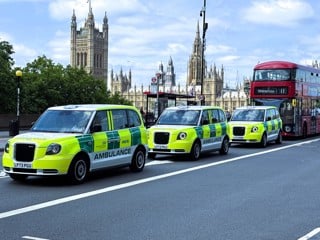He will also remove the cash allowance from any grey fleet driver who does not conform to policy.
Rayner says it is essential that drivers understand the cultural shift towards improvement.
“Once they see it as monitoring to help them, not get rid of them, they become engaged. Everyone can see the system and their progress.”
Unusually, Zenith has seen little need for structured driver training, often considered a staple of better environmental performance.
“Our transport supervisors will give drivers tips on their driving and we are going to train the supervisors to be driver-assessors to help the drivers understand how they should handle that particular vehicle,” says Rayner.
The company had eschewed blanket training as costly and time-consuming but expected to look at targeted training once it identified individual traits.
However, Rayner says: “There has been very little need because our driving events and fuel usage have gone right down.”
The use of club cars, pool cars and car sharing can all contribute to cutting mileage – the more effort a driver has to make in order to ‘book’ the vehicle the more they will do so only when the journey is essential.
Driver training can make substantial savings in terms of fuel efficiency and usually these benefits go hand in hand with safety and compliance.
Nonetheless, fuel savings of 5-15% are not uncommon among newly-trained drivers.
The Energy Saving Trust (EST) offers 50-minute courses for £20 per employee and says some drivers achieve fuel savings of 17% on the day, likely to settle down to a long-term saving of 5%.
Ceuta Healthcare used the fact that drivers covering 12,000 miles a year could save a minimum of £250 on fuel to sell the EST training to its workforce, on the basis that it would save them money as individuals too.
One of the challenges of driver training is sustaining the improvements and not allowing people to lapse back into poor habits. Technology can play a valuable role here, both as an ever-vigilant observer and also through providing real-time reports to managers, driver-trainers and the drivers themselves.
Telematics systems can mean anything from tracking vehicles’ progress to interrogating the engine management system, but the most immediate effect can come from those which give drivers traffic light ratings or real-time instruction as they progress.
Ashwoods Automotive’s Lightfoot system which is currently available for Citroën, Renault, Peugeot, Nissan and Volkswagen vans, for example, takes into account gradient, load and road conditions and coaches the driver on how to make the vehicle perform in the most fuel-efficient and, therefore, most environmentally-friendly way.



















Login to comment
Comments
No comments have been made yet.